Synthetic Bone Grafts
Allografts
Xenografts
Growth Factors
Autografts
Dental Implants
Periodontal Regeneration
Maxillofacial Surgery
Alveolar Bone Augmentation
Particulate
Block
Putty
Gel
Membrane
Dental Clinics
Hospitals
Academic and Research Institutes
North America
Europe
South America
Asia Pacific
Middle East and Africa
North America Outlook (USD Billion, 2019-2035)
North America Dental Bone Graft Substitutes Market by Type
Synthetic Bone Grafts
Allografts
Xenografts
Growth Factors
Autografts
North America Dental Bone Graft Substitutes Market by Application Type
Dental Implants
Periodontal Regeneration
Maxillofacial Surgery
Alveolar Bone Augmentation
North America Dental Bone Graft Substitutes Market by Form Type
Particulate
Block
Putty
Gel
Membrane
North America Dental Bone Graft Substitutes Market by End Use Type
Dental Clinics
Hospitals
Academic and Research Institutes
North America Dental Bone Graft Substitutes Market by Regional Type
US
Canada
US Outlook (USD Billion, 2019-2035)
US Dental Bone Graft Substitutes Market by Type
Synthetic Bone Grafts
Allografts
Xenografts
Growth Factors
Autografts
US Dental Bone Graft Substitutes Market by Application Type
Dental Implants
Periodontal Regeneration
Maxillofacial Surgery
Alveolar Bone Augmentation
US Dental Bone Graft Substitutes Market by Form Type
Particulate
Block
Putty
Gel
Membrane
US Dental Bone Graft Substitutes Market by End Use Type
Dental Clinics
Hospitals
Academic and Research Institutes
CANADA Outlook (USD Billion, 2019-2035)
CANADA Dental Bone Graft Substitutes Market by Type
Synthetic Bone Grafts
Allografts
Xenografts
Growth Factors
Autografts
CANADA Dental Bone Graft Substitutes Market by Application Type
Dental Implants
Periodontal Regeneration
Maxillofacial Surgery
Alveolar Bone Augmentation
CANADA Dental Bone Graft Substitutes Market by Form Type
Particulate
Block
Putty
Gel
Membrane
CANADA Dental Bone Graft Substitutes Market by End Use Type
Dental Clinics
Hospitals
Academic and Research Institutes
Europe Outlook (USD Billion, 2019-2035)
Europe Dental Bone Graft Substitutes Market by Type
Synthetic Bone Grafts
Allografts
Xenografts
Growth Factors
Autografts
Europe Dental Bone Graft Substitutes Market by Application Type
Dental Implants
Periodontal Regeneration
Maxillofacial Surgery
Alveolar Bone Augmentation
Europe Dental Bone Graft Substitutes Market by Form Type
Particulate
Block
Putty
Gel
Membrane
Europe Dental Bone Graft Substitutes Market by End Use Type
Dental Clinics
Hospitals
Academic and Research Institutes
Europe Dental Bone Graft Substitutes Market by Regional Type
Germany
UK
France
Russia
Italy
Spain
Rest of Europe
GERMANY Outlook (USD Billion, 2019-2035)
GERMANY Dental Bone Graft Substitutes Market by Type
Synthetic Bone Grafts
Allografts
Xenografts
Growth Factors
Autografts
GERMANY Dental Bone Graft Substitutes Market by Application Type
Dental Implants
Periodontal Regeneration
Maxillofacial Surgery
Alveolar Bone Augmentation
GERMANY Dental Bone Graft Substitutes Market by Form Type
Particulate
Block
Putty
Gel
Membrane
GERMANY Dental Bone Graft Substitutes Market by End Use Type
Dental Clinics
Hospitals
Academic and Research Institutes
UK Outlook (USD Billion, 2019-2035)
UK Dental Bone Graft Substitutes Market by Type
Synthetic Bone Grafts
Allografts
Xenografts
Growth Factors
Autografts
UK Dental Bone Graft Substitutes Market by Application Type
Dental Implants
Periodontal Regeneration
Maxillofacial Surgery
Alveolar Bone Augmentation
UK Dental Bone Graft Substitutes Market by Form Type
Particulate
Block
Putty
Gel
Membrane
UK Dental Bone Graft Substitutes Market by End Use Type
Dental Clinics
Hospitals
Academic and Research Institutes
FRANCE Outlook (USD Billion, 2019-2035)
FRANCE Dental Bone Graft Substitutes Market by Type
Synthetic Bone Grafts
Allografts
Xenografts
Growth Factors
Autografts
FRANCE Dental Bone Graft Substitutes Market by Application Type
Dental Implants
Periodontal Regeneration
Maxillofacial Surgery
Alveolar Bone Augmentation
FRANCE Dental Bone Graft Substitutes Market by Form Type
Particulate
Block
Putty
Gel
Membrane
FRANCE Dental Bone Graft Substitutes Market by End Use Type
Dental Clinics
Hospitals
Academic and Research Institutes
RUSSIA Outlook (USD Billion, 2019-2035)
RUSSIA Dental Bone Graft Substitutes Market by Type
Synthetic Bone Grafts
Allografts
Xenografts
Growth Factors
Autografts
RUSSIA Dental Bone Graft Substitutes Market by Application Type
Dental Implants
Periodontal Regeneration
Maxillofacial Surgery
Alveolar Bone Augmentation
RUSSIA Dental Bone Graft Substitutes Market by Form Type
Particulate
Block
Putty
Gel
Membrane
RUSSIA Dental Bone Graft Substitutes Market by End Use Type
Dental Clinics
Hospitals
Academic and Research Institutes
ITALY Outlook (USD Billion, 2019-2035)
ITALY Dental Bone Graft Substitutes Market by Type
Synthetic Bone Grafts
Allografts
Xenografts
Growth Factors
Autografts
ITALY Dental Bone Graft Substitutes Market by Application Type
Dental Implants
Periodontal Regeneration
Maxillofacial Surgery
Alveolar Bone Augmentation
ITALY Dental Bone Graft Substitutes Market by Form Type
Particulate
Block
Putty
Gel
Membrane
ITALY Dental Bone Graft Substitutes Market by End Use Type
Dental Clinics
Hospitals
Academic and Research Institutes
SPAIN Outlook (USD Billion, 2019-2035)
SPAIN Dental Bone Graft Substitutes Market by Type
Synthetic Bone Grafts
Allografts
Xenografts
Growth Factors
Autografts
SPAIN Dental Bone Graft Substitutes Market by Application Type
Dental Implants
Periodontal Regeneration
Maxillofacial Surgery
Alveolar Bone Augmentation
SPAIN Dental Bone Graft Substitutes Market by Form Type
Particulate
Block
Putty
Gel
Membrane
SPAIN Dental Bone Graft Substitutes Market by End Use Type
Dental Clinics
Hospitals
Academic and Research Institutes
REST OF EUROPE Outlook (USD Billion, 2019-2035)
REST OF EUROPE Dental Bone Graft Substitutes Market by Type
Synthetic Bone Grafts
Allografts
Xenografts
Growth Factors
Autografts
REST OF EUROPE Dental Bone Graft Substitutes Market by Application Type
Dental Implants
Periodontal Regeneration
Maxillofacial Surgery
Alveolar Bone Augmentation
REST OF EUROPE Dental Bone Graft Substitutes Market by Form Type
Particulate
Block
Putty
Gel
Membrane
REST OF EUROPE Dental Bone Graft Substitutes Market by End Use Type
Dental Clinics
Hospitals
Academic and Research Institutes
APAC Outlook (USD Billion, 2019-2035)
APAC Dental Bone Graft Substitutes Market by Type
Synthetic Bone Grafts
Allografts
Xenografts
Growth Factors
Autografts
APAC Dental Bone Graft Substitutes Market by Application Type
Dental Implants
Periodontal Regeneration
Maxillofacial Surgery
Alveolar Bone Augmentation
APAC Dental Bone Graft Substitutes Market by Form Type
Particulate
Block
Putty
Gel
Membrane
APAC Dental Bone Graft Substitutes Market by End Use Type
Dental Clinics
Hospitals
Academic and Research Institutes
APAC Dental Bone Graft Substitutes Market by Regional Type
China
India
Japan
South Korea
Malaysia
Thailand
Indonesia
Rest of APAC
CHINA Outlook (USD Billion, 2019-2035)
CHINA Dental Bone Graft Substitutes Market by Type
Synthetic Bone Grafts
Allografts
Xenografts
Growth Factors
Autografts
CHINA Dental Bone Graft Substitutes Market by Application Type
Dental Implants
Periodontal Regeneration
Maxillofacial Surgery
Alveolar Bone Augmentation
CHINA Dental Bone Graft Substitutes Market by Form Type
Particulate
Block
Putty
Gel
Membrane
CHINA Dental Bone Graft Substitutes Market by End Use Type
Dental Clinics
Hospitals
Academic and Research Institutes
INDIA Outlook (USD Billion, 2019-2035)
INDIA Dental Bone Graft Substitutes Market by Type
Synthetic Bone Grafts
Allografts
Xenografts
Growth Factors
Autografts
INDIA Dental Bone Graft Substitutes Market by Application Type
Dental Implants
Periodontal Regeneration
Maxillofacial Surgery
Alveolar Bone Augmentation
INDIA Dental Bone Graft Substitutes Market by Form Type
Particulate
Block
Putty
Gel
Membrane
INDIA Dental Bone Graft Substitutes Market by End Use Type
Dental Clinics
Hospitals
Academic and Research Institutes
JAPAN Outlook (USD Billion, 2019-2035)
JAPAN Dental Bone Graft Substitutes Market by Type
Synthetic Bone Grafts
Allografts
Xenografts
Growth Factors
Autografts
JAPAN Dental Bone Graft Substitutes Market by Application Type
Dental Implants
Periodontal Regeneration
Maxillofacial Surgery
Alveolar Bone Augmentation
JAPAN Dental Bone Graft Substitutes Market by Form Type
Particulate
Block
Putty
Gel
Membrane
JAPAN Dental Bone Graft Substitutes Market by End Use Type
Dental Clinics
Hospitals
Academic and Research Institutes
SOUTH KOREA Outlook (USD Billion, 2019-2035)
SOUTH KOREA Dental Bone Graft Substitutes Market by Type
Synthetic Bone Grafts
Allografts
Xenografts
Growth Factors
Autografts
SOUTH KOREA Dental Bone Graft Substitutes Market by Application Type
Dental Implants
Periodontal Regeneration
Maxillofacial Surgery
Alveolar Bone Augmentation
SOUTH KOREA Dental Bone Graft Substitutes Market by Form Type
Particulate
Block
Putty
Gel
Membrane
SOUTH KOREA Dental Bone Graft Substitutes Market by End Use Type
Dental Clinics
Hospitals
Academic and Research Institutes
MALAYSIA Outlook (USD Billion, 2019-2035)
MALAYSIA Dental Bone Graft Substitutes Market by Type
Synthetic Bone Grafts
Allografts
Xenografts
Growth Factors
Autografts
MALAYSIA Dental Bone Graft Substitutes Market by Application Type
Dental Implants
Periodontal Regeneration
Maxillofacial Surgery
Alveolar Bone Augmentation
MALAYSIA Dental Bone Graft Substitutes Market by Form Type
Particulate
Block
Putty
Gel
Membrane
MALAYSIA Dental Bone Graft Substitutes Market by End Use Type
Dental Clinics
Hospitals
Academic and Research Institutes
THAILAND Outlook (USD Billion, 2019-2035)
THAILAND Dental Bone Graft Substitutes Market by Type
Synthetic Bone Grafts
Allografts
Xenografts
Growth Factors
Autografts
THAILAND Dental Bone Graft Substitutes Market by Application Type
Dental Implants
Periodontal Regeneration
Maxillofacial Surgery
Alveolar Bone Augmentation
THAILAND Dental Bone Graft Substitutes Market by Form Type
Particulate
Block
Putty
Gel
Membrane
THAILAND Dental Bone Graft Substitutes Market by End Use Type
Dental Clinics
Hospitals
Academic and Research Institutes
INDONESIA Outlook (USD Billion, 2019-2035)
INDONESIA Dental Bone Graft Substitutes Market by Type
Synthetic Bone Grafts
Allografts
Xenografts
Growth Factors
Autografts
INDONESIA Dental Bone Graft Substitutes Market by Application Type
Dental Implants
Periodontal Regeneration
Maxillofacial Surgery
Alveolar Bone Augmentation
INDONESIA Dental Bone Graft Substitutes Market by Form Type
Particulate
Block
Putty
Gel
Membrane
INDONESIA Dental Bone Graft Substitutes Market by End Use Type
Dental Clinics
Hospitals
Academic and Research Institutes
REST OF APAC Outlook (USD Billion, 2019-2035)
REST OF APAC Dental Bone Graft Substitutes Market by Type
Synthetic Bone Grafts
Allografts
Xenografts
Growth Factors
Autografts
REST OF APAC Dental Bone Graft Substitutes Market by Application Type
Dental Implants
Periodontal Regeneration
Maxillofacial Surgery
Alveolar Bone Augmentation
REST OF APAC Dental Bone Graft Substitutes Market by Form Type
Particulate
Block
Putty
Gel
Membrane
REST OF APAC Dental Bone Graft Substitutes Market by End Use Type
Dental Clinics
Hospitals
Academic and Research Institutes
South America Outlook (USD Billion, 2019-2035)
South America Dental Bone Graft Substitutes Market by Type
Synthetic Bone Grafts
Allografts
Xenografts
Growth Factors
Autografts
South America Dental Bone Graft Substitutes Market by Application Type
Dental Implants
Periodontal Regeneration
Maxillofacial Surgery
Alveolar Bone Augmentation
South America Dental Bone Graft Substitutes Market by Form Type
Particulate
Block
Putty
Gel
Membrane
South America Dental Bone Graft Substitutes Market by End Use Type
Dental Clinics
Hospitals
Academic and Research Institutes
South America Dental Bone Graft Substitutes Market by Regional Type
Brazil
Mexico
Argentina
Rest of South America
BRAZIL Outlook (USD Billion, 2019-2035)
BRAZIL Dental Bone Graft Substitutes Market by Type
Synthetic Bone Grafts
Allografts
Xenografts
Growth Factors
Autografts
BRAZIL Dental Bone Graft Substitutes Market by Application Type
Dental Implants
Periodontal Regeneration
Maxillofacial Surgery
Alveolar Bone Augmentation
BRAZIL Dental Bone Graft Substitutes Market by Form Type
Particulate
Block
Putty
Gel
Membrane
BRAZIL Dental Bone Graft Substitutes Market by End Use Type
Dental Clinics
Hospitals
Academic and Research Institutes
MEXICO Outlook (USD Billion, 2019-2035)
MEXICO Dental Bone Graft Substitutes Market by Type
Synthetic Bone Grafts
Allografts
Xenografts
Growth Factors
Autografts
MEXICO Dental Bone Graft Substitutes Market by Application Type
Dental Implants
Periodontal Regeneration
Maxillofacial Surgery
Alveolar Bone Augmentation
MEXICO Dental Bone Graft Substitutes Market by Form Type
Particulate
Block
Putty
Gel
Membrane
MEXICO Dental Bone Graft Substitutes Market by End Use Type
Dental Clinics
Hospitals
Academic and Research Institutes
ARGENTINA Outlook (USD Billion, 2019-2035)
ARGENTINA Dental Bone Graft Substitutes Market by Type
Synthetic Bone Grafts
Allografts
Xenografts
Growth Factors
Autografts
ARGENTINA Dental Bone Graft Substitutes Market by Application Type
Dental Implants
Periodontal Regeneration
Maxillofacial Surgery
Alveolar Bone Augmentation
ARGENTINA Dental Bone Graft Substitutes Market by Form Type
Particulate
Block
Putty
Gel
Membrane
ARGENTINA Dental Bone Graft Substitutes Market by End Use Type
Dental Clinics
Hospitals
Academic and Research Institutes
REST OF SOUTH AMERICA Outlook (USD Billion, 2019-2035)
REST OF SOUTH AMERICA Dental Bone Graft Substitutes Market by Type
Synthetic Bone Grafts
Allografts
Xenografts
Growth Factors
Autografts
REST OF SOUTH AMERICA Dental Bone Graft Substitutes Market by Application Type
Dental Implants
Periodontal Regeneration
Maxillofacial Surgery
Alveolar Bone Augmentation
REST OF SOUTH AMERICA Dental Bone Graft Substitutes Market by Form Type
Particulate
Block
Putty
Gel
Membrane
REST OF SOUTH AMERICA Dental Bone Graft Substitutes Market by End Use Type
Dental Clinics
Hospitals
Academic and Research Institutes
MEA Outlook (USD Billion, 2019-2035)
MEA Dental Bone Graft Substitutes Market by Type
Synthetic Bone Grafts
Allografts
Xenografts
Growth Factors
Autografts
MEA Dental Bone Graft Substitutes Market by Application Type
Dental Implants
Periodontal Regeneration
Maxillofacial Surgery
Alveolar Bone Augmentation
MEA Dental Bone Graft Substitutes Market by Form Type
Particulate
Block
Putty
Gel
Membrane
MEA Dental Bone Graft Substitutes Market by End Use Type
Dental Clinics
Hospitals
Academic and Research Institutes
MEA Dental Bone Graft Substitutes Market by Regional Type
GCC Countries
South Africa
Rest of MEA
GCC COUNTRIES Outlook (USD Billion, 2019-2035)
GCC COUNTRIES Dental Bone Graft Substitutes Market by Type
Synthetic Bone Grafts
Allografts
Xenografts
Growth Factors
Autografts
GCC COUNTRIES Dental Bone Graft Substitutes Market by Application Type
Dental Implants
Periodontal Regeneration
Maxillofacial Surgery
Alveolar Bone Augmentation
GCC COUNTRIES Dental Bone Graft Substitutes Market by Form Type
Particulate
Block
Putty
Gel
Membrane
GCC COUNTRIES Dental Bone Graft Substitutes Market by End Use Type
Dental Clinics
Hospitals
Academic and Research Institutes
SOUTH AFRICA Outlook (USD Billion, 2019-2035)
SOUTH AFRICA Dental Bone Graft Substitutes Market by Type
Synthetic Bone Grafts
Allografts
Xenografts
Growth Factors
Autografts
SOUTH AFRICA Dental Bone Graft Substitutes Market by Application Type
Dental Implants
Periodontal Regeneration
Maxillofacial Surgery
Alveolar Bone Augmentation
SOUTH AFRICA Dental Bone Graft Substitutes Market by Form Type
Particulate
Block
Putty
Gel
Membrane
SOUTH AFRICA Dental Bone Graft Substitutes Market by End Use Type
Dental Clinics
Hospitals
Academic and Research Institutes
REST OF MEA Outlook (USD Billion, 2019-2035)
REST OF MEA Dental Bone Graft Substitutes Market by Type
Synthetic Bone Grafts
Allografts
Xenografts
Growth Factors
Autografts
REST OF MEA Dental Bone Graft Substitutes Market by Application Type
Dental Implants
Periodontal Regeneration
Maxillofacial Surgery
Alveolar Bone Augmentation
REST OF MEA Dental Bone Graft Substitutes Market by Form Type
Particulate
Block
Putty
Gel
Membrane
REST OF MEA Dental Bone Graft Substitutes Market by End Use Type
Dental Clinics
Hospitals
Academic and Research Institutes
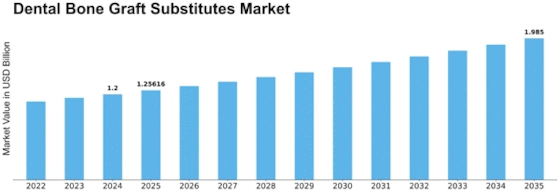

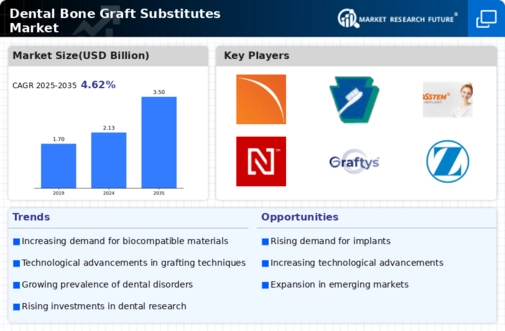
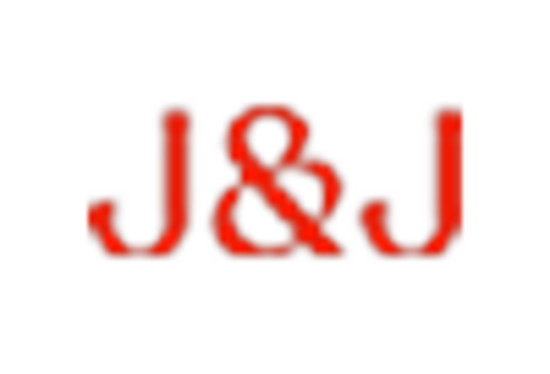
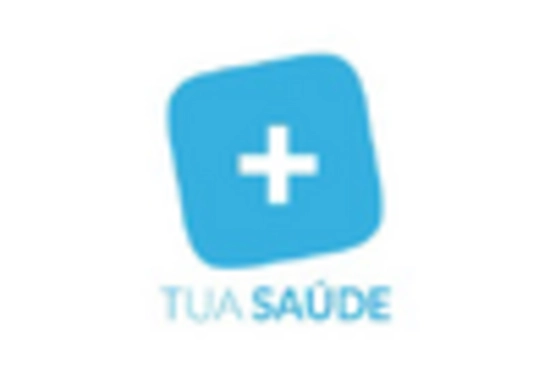



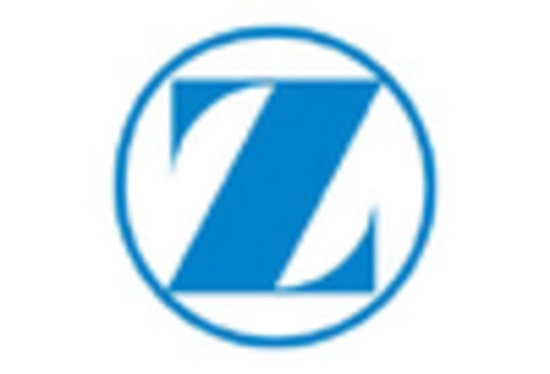

Leave a Comment